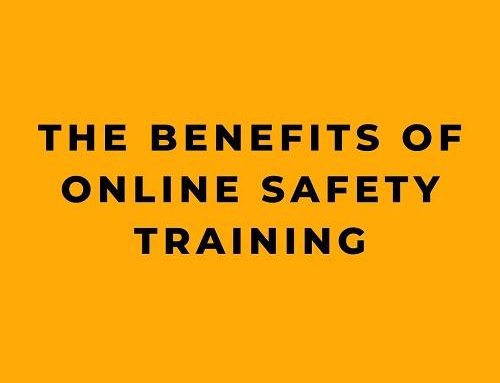In this article, I aim to debunk common misconceptions about online safety training. From the effectiveness of the training to the convenience and cost savings it offers, many myths surrounding online safety training need to be addressed.
Myth #1: Online safety training is less effective than in-person training.
Fact: Research has shown that online safety training can be just as effective, if not more so, than in-person training. With interactive elements, such as quizzes and videos, online training can engage employees in the learning process, leading to better understanding and retention.
Myth #2: Online safety training is not suitable for all employees.
Fact: Online safety training provides a convenient, flexible solution for organizations and individuals of all ages and abilities. Employees can access materials from any device with an internet connection whenever it’s most convenient to fit the training into their schedule, enabling companies to provide more comprehensive instruction that reaches a greater number of participants simultaneously. This ensures everyone receives equal education on vital topics such as safety in the workplace.
Myth #3: Online safety training is too expensive.
Fact: While upfront costs are associated with developing and implementing an online safety training program, long-term cost savings can be significant. By providing training online, organizations can eliminate the need for in-person training sessions, which can be costly and time-consuming to coordinate. Online training also allows organizations to quickly and easily update training materials as needed rather than incurring the costs of printing and distributing new training materials.
Myth #4: Online safety training is not engaging.
Fact: By incorporating interactive assets such as quizzes and videos, online safety training can be incredibly captivating! Not only does it require employees to participate in the learning process actively, but by doing so, they are also more likely to retain the information. Moreover, this type of engaged approach helps keep them motivated and driven to complete their coursework.
Myth #5: Online safety training is not convenient.
Fact: Online safety training is extremely convenient, as it allows employees to complete training at their own pace and on their own time. With flexible scheduling and the ability to access training materials from any device with an internet connection, employees can complete training when it is convenient for them, without the need to interrupt their workday or travel to a training location.
Myth #6: Online safety training is not customizable.
Fact: Whether it’s the content, language, or overall design of your online safety training program, our team can customize it to suit the particular needs of your organization. With an artfully crafted and tailored safety training structure in place, you’ll have all the necessary tools to ensure that your employees are up-to-date on applicable information regarding workplace hazards and health risks.
Myth #7: Online safety training is not interactive.
Fact: Online safety training can be highly interactive, with quizzes, videos, and other interactive elements that engage and involve employees in the learning process. By requiring employees to participate in the training actively, online safety training can improve understanding and retention.
Myth #8: Online safety training is not suitable for hands-on training.
Fact: Online safety training can be a valuable supplement to traditional hands-on instruction, providing employees with an essential foundation of knowledge that will further bolster their understanding and enable them to apply their workplace skills confidently. By implementing such a program into your organization’s learning strategy, you can ensure that your personnel has the insight necessary to confront any potential hazards they may encounter.
Myth #9: Online safety training is irrelevant to the work environment.
Fact: Online safety training can be highly relevant to the work environment, with courses covering various topics that apply to various industries and job roles. By using real-life workplace scenarios and examples in the training materials, online safety training can be tailored to meet the specific needs of an organization and its employees.
Myth #10: Online safety training is not effective for regulatory compliance.
Fact: Online safety training is a great way to ensure an organization complies with all regulatory requirements. Not only does it give companies the ability to track and measure employee progress, but also provides insights into how well they are comprehending their lessons. With online training, organizations can rest assured that everyone on staff has fulfilled the necessary regulations for optimal success!
Myth #11: Online safety training is not accessible.
Fact: Online safety training is highly accessible, as it can be completed from any device with an internet connection. This not only makes it convenient for employees to complete the training, but it also allows organizations to reach a wider audience and ensure that all employees have access to the training.
Myth #12: Online safety training is not measurable.
Fact: Online safety training is highly measurable, with the ability to track and measure employee progress, test comprehension, and identify areas where additional training may be needed. This not only helps to ensure that employees are retaining the information, but it also allows organizations to improve and update their training programs continuously.
Myth #13: Online safety training is ineffective for teaching hands-on skills.
Fact: Online safety training is an invaluable resource for supplementing valuable hands-on instruction. By providing employees with a foundation of knowledge through online courses, organizations can boost the efficacy of in-person learning and ensure that their staff are ready to put their skills into practice.
Myth #14: Online safety training is unsuitable for visual or kinesthetic learners.
Fact: With the incorporation of stimulating videos and interactive elements, online safety training can prove highly effective for learners who prefer visual or kinesthetic learning. By using multiple approaches to teaching, this type of training effectively appeals to a broad audience while promoting understanding and retention.
Myth #15: Online safety training is not suitable for remote employees.
Fact: Online safety training is highly suitable for remote employees, as it allows them to complete training from any location with an internet connection. This not only makes it convenient for remote employees to complete the training, but it also allows organizations to provide a consistent level of training to all employees, regardless of location.
Myth #16: Online safety training is not suitable for new hires.
Fact: Online safety training can be an effective tool for onboarding new hires, as it allows them to complete training as soon as they start working. Online safety training can help new hires hit the ground running and succeed in their new role by providing them with a foundation of knowledge and skills.
Myth #17: Online safety training is not suitable for language learners.
Fact: Online safety training is an exceptional option for language learners, with its capability to deliver instruction in multiple languages. Organizations can amplify comprehension and retention by providing instruction in the employees’ native tongue. This ensures that all personnel have access to the education they need.
Myth #18: Online safety training is not suitable for small businesses.
Fact: Online safety training is highly suitable for small businesses, as it allows organizations to provide a consistent level of training to all employees at a fraction of the cost of in-person training. With flexible pricing options and the ability to customize the training to meet the specific needs of the organization, online safety training can be an affordable and effective solution for small businesses.
Myth #19: Online safety training is not suitable for companies with a diverse workforce.
Fact: Online safety training is highly suitable for companies with a diverse workforce, as it allows organizations to provide a consistent level of training to all employees, regardless of language, location, or skill level. With the ability to deliver training in multiple languages and customize the training to meet the specific needs of the organization, online safety training can be an effective solution for companies with a diverse workforce.
Myth #20: Online safety training is not suitable for companies with a high employee turnover rate.
Fact: Companies with frequent personnel changes should highly consider online safety training as a means to welcome efficiently and onboard new employees while still ensuring uniform instruction. By monitoring employee performance and understanding, organizations can also pinpoint gaps in knowledge or areas where additional teaching is essential. This can help mitigate potential accidents, bolster morale and enhance productivity.
In conclusion, online safety training is a valuable tool for any organization looking to improve the safety and well-being of its employees. From the convenience and cost savings, it offers to the ability to track and measure the effectiveness of the training, online safety training can significantly impact any organization’s success. The myths surrounding online safety training are just that.










